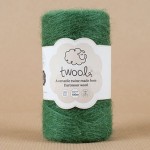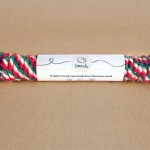The 20th century saw a proliferation of synthetic materials, hailed as an improvement on naturally occurring plant and animal fibres. Fast forward to the 21st century and, despite the wealth of man-made options available, one of the oldest naturally occurring fabrics around – sheep’s wool – has enjoyed a revival.
For years, the world of fashion was dominated by synthetic fibres. Then, last year, the media announced that wool had made a comeback, was a staple in product lines developed by big name luxury fashion houses, and that the value of the British wool clothing market had soared over the past few years.
However, it is not just in the fickle world of fashion that wool has taken off. Its myriad of superior properties means this highly insulating and non-flammable material has a number of surprising applications. Furthermore, it is starting to be recognised as a feasible fabric for product developers looking for alternative materials that are eco-friendly, innovative and lightweight.
Over the past few years, higher education establishments have engaged in research and development projects involving this versatile material, with the universities of Strathclyde and Seville collaborating on a project using composite bricks consisting of sheep’s wool, clay and seaweed.[1] In another example, wool insulation was being considered as a safe solution for keeping houses warm, following studies at Bangor University,[2] which showed that wool absorbed formaldehyde, a chemical present in building products that could prove harmful to human health.
Wool has also proven a popular choice for furniture manufacturers, thanks to being flame retardant, wrinkle resistant, hypoallergenic, anti-static and easy to clean. Furthermore, wool is an excellent option for manufacturers who are concerned about the environment. Not only is it renewable – as sheep produce a new fleece every year – it is also eco-friendly, naturally biodegrading when thrown away.
[1] Galan-Marin, Carmen and Rivera-Gomez, Carlos and Bradley, Fiona (2013) Ultrasonic, molecular and mechanical testing diagnostics in natural fibre reinforced, polymer-stabilised earth blocks.
International Journal of Polymer Science, 2013. pp. 1-10. ISSN 1687-9422
[2] Curling, S.F.; Loxton, C. & Ormondroyd, G.A. (2012) A rapid method for investigating the absorption of formaldehyde from air by wool. Journal of Materials Science 47 (7) pp.3248-3251
Product developers using wool in the South West have accessed CALMARE’s materials fully funded support, funded by the European Regional Development Fund (ERDF), the University of Exeter and industry partners.
Solidwool in Buckfastleigh has created a composite product using fleece from upland UK sheep as reinforcement, in place of injection moulded polymers. Its concern for the environment means the business also uses bio-resins in place of the 100 per cent petrochemical resins traditionally used in composite manufacture. CALMARE has aided in the process optimisation, looking at how post-curing affects the properties of the material.
CALMARE also recently carried out a project for The Provenance Company, owned by Kim Stead, who produces Twool products – twine and rope from the wool of the rare breed Whiteface Dartmoor sheep. Twool began in 2012, as a project to find a new way to recycle the wool, which might otherwise have been burnt.
Following the success of her initial products, Kim is developing some new ones, and, as well as having won a clutch of national awards, she has been nominated at the Chelsea Flower Show two years running for her Twool twine, a wool alternative to jute twine. Kim approached CALMARE to assist her with testing the elasticity, flexibility and resilience of various twines and ropes, with diameters ranging from 5mm to 50mm. Wool has surprising strength and the Twool barrier rope was shown to be able to hold the equivalent weight of a Ford Mondeo.
Kim said: “Not only is wool versatile, durable, soft and supple, making it the ideal material for the product, it is also ultra-sustainable. Just as importantly, the fact that we are using a product from local sheep means that its origins are traceable and that we are supporting British rural business.”
The properties of wool
The individual characteristics of wool between species can vary as a result of the slightly differing structures. However, in the main, the characteristics of the material are:
• Natural and renewable – grown rather than produced, lower carbon footprint during manufacturing (campaignforwool.co.nz).
• Natural high UV stability.
• Biodegradable – wool only takes a few years to fully decompose and, with its high nitrogen content, can act as a fertiliser.
• Naturally insulating.
• Durable – fibres are able to bend 20,000 times without breaking.
• Fire retardant – in its natural untreated state, it does not burn, but instead forms a self-insulating char that prevents further flame spread and extinguishes itself (wool has a very high inflammation point of 570 – 600°C due to its high Nitrogen content of ~16%). Wool is self-extinguishing and has a high Limiting Oxygen Index (LOI=25.2), which means, to completely burn wool, an oxygen content of 25.2%, above that found in the Earth’s atmosphere, is necessary (woollyshepherd.co.uk).


